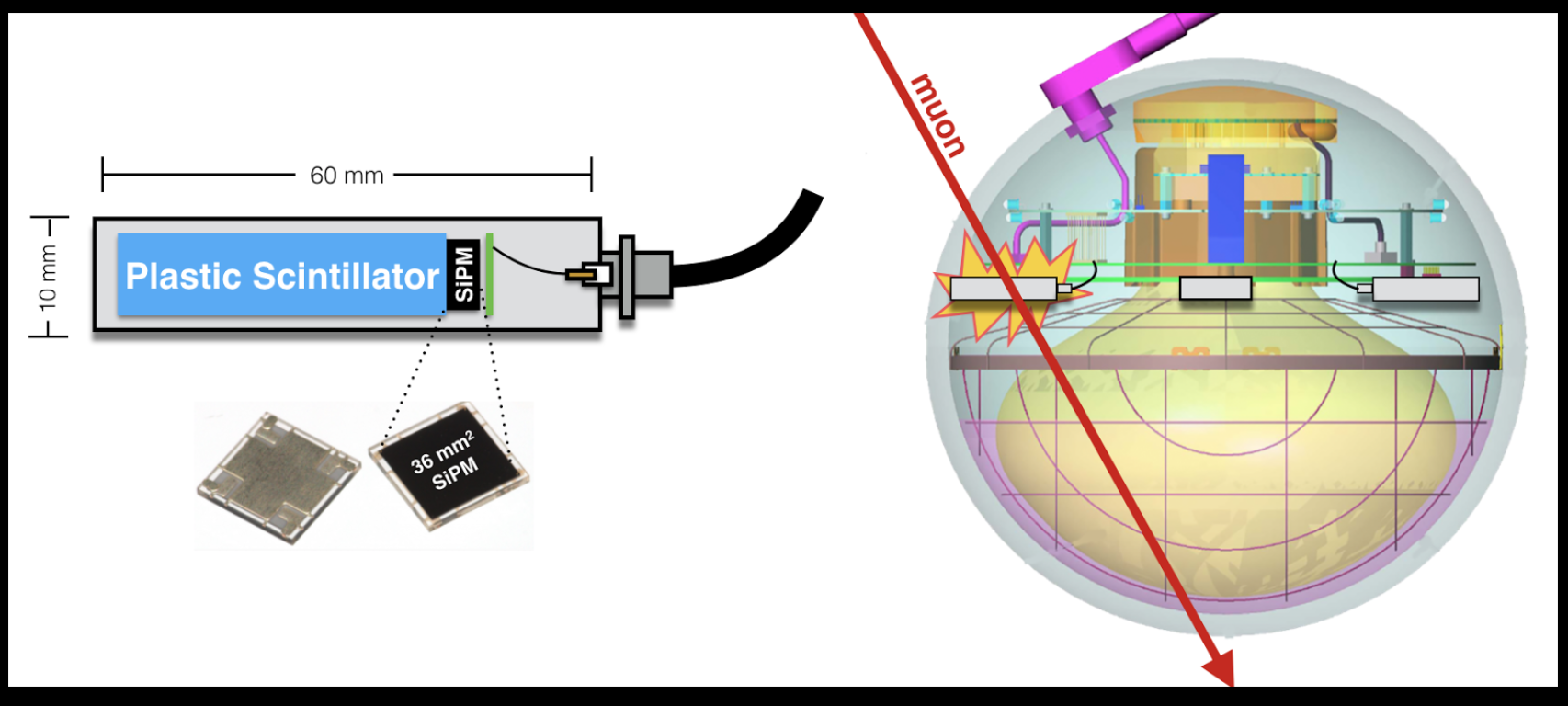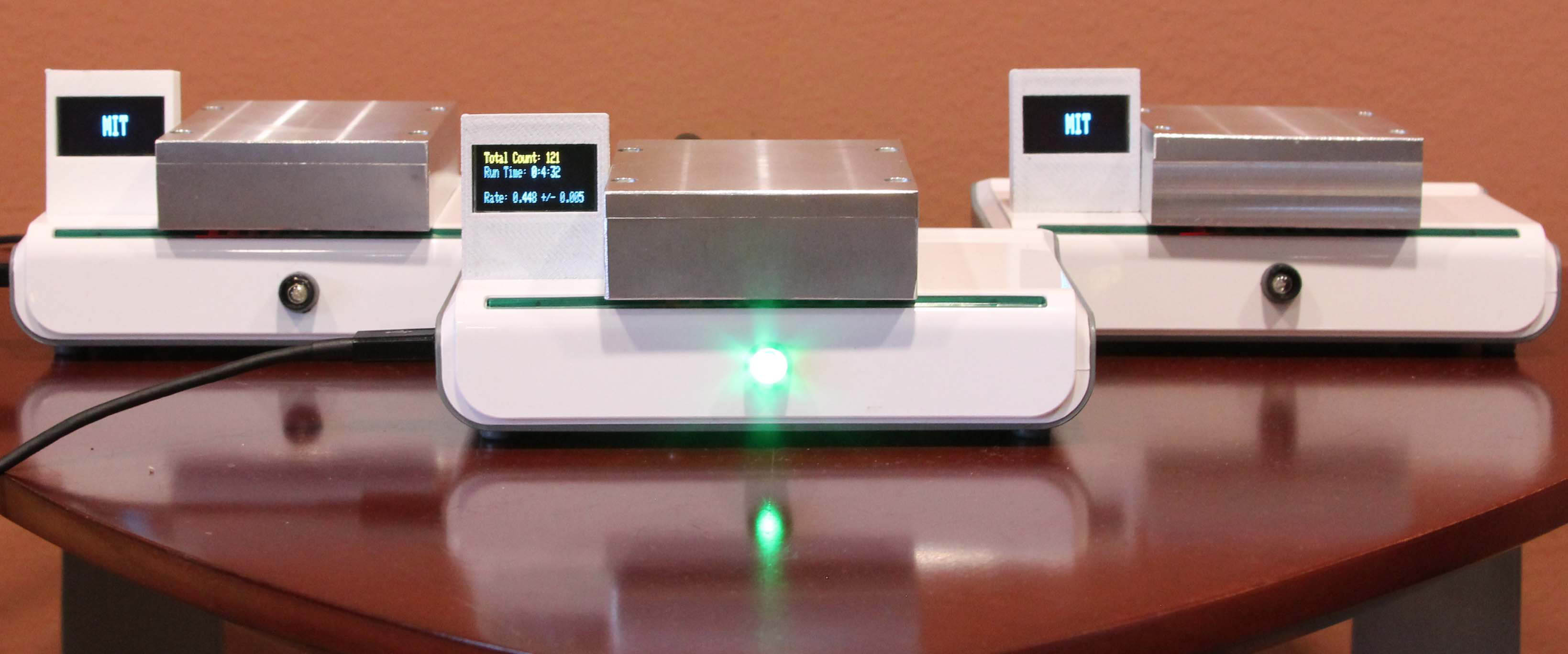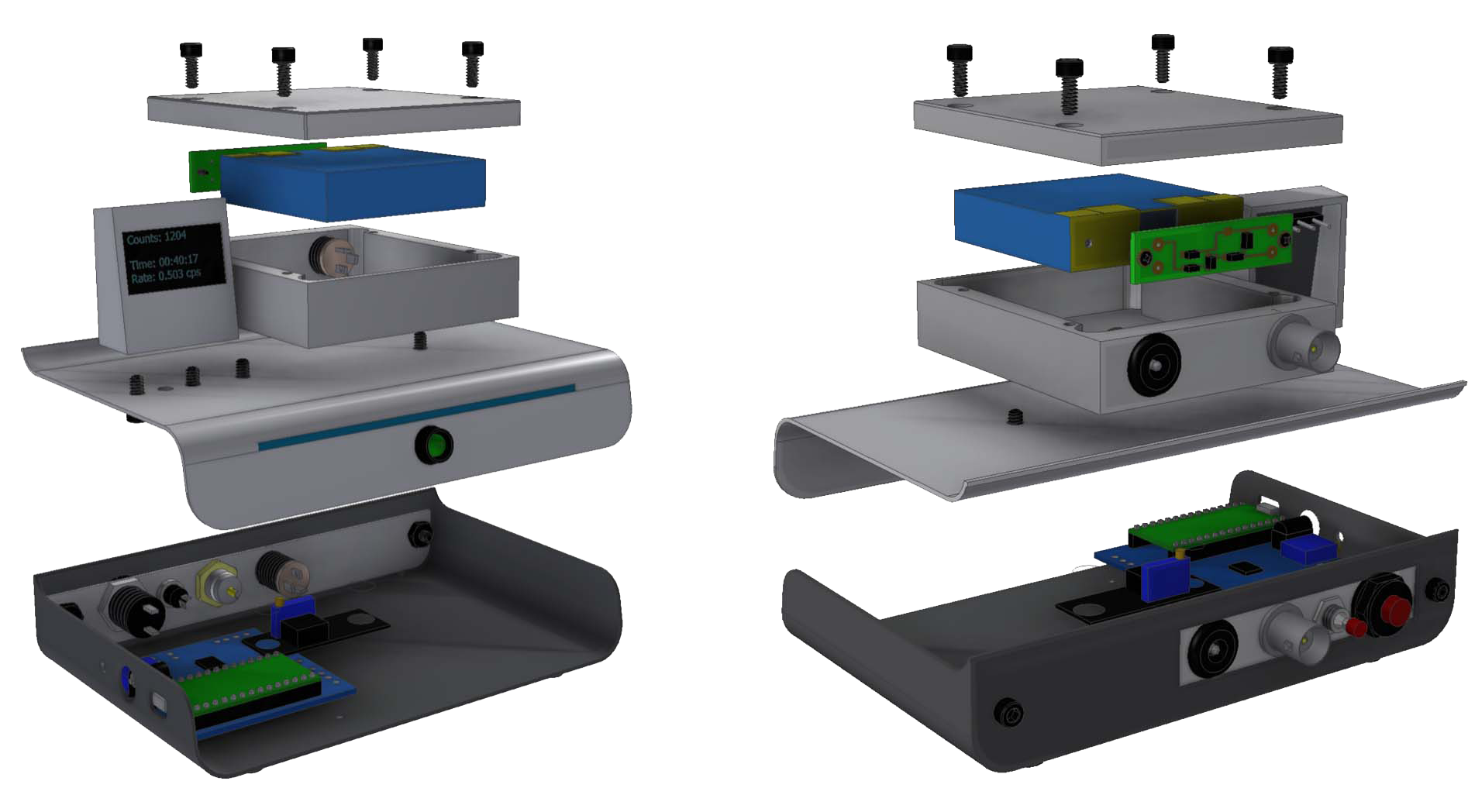



The desktop muon detector was initially built as a Muon Tagging Optical Modules (MTOMs) for PINGU, the proposed low energy for IceCube, in order to tag the position of muons with high precision (within a few cm). This is inspired by a recent study using the IceCube dark matter detector, DMIce, which consists of two 5 inch NaI crystals. The primary purpose of DMIce is the direct detection of dark matter; however, the crystals detect 12 muons per day that also trigger IceCube.
A study of the impact in energy, direction, and position uncertainty of muons using the DMIce detector in conjunction with IceCube. It also showed a reduction in misreconstructed events, when tagging the muon using the NaI crystals, as well as an improvement in the track reconstructed position. Given that the mTOMs size is 10 times smaller than the NaI crystal, the track can be better localized.
The mTOMs in PINGU will be constructed of solid, 5x5x1 cm scintillator block placed within a lighttight reflective aluminium casing. This prototype has been built in the context of a stand alone desktop muon counter. The optical readout will be through a silicon photomultiplier (SiPM). These modules have a thin profile, so that they require very little space within the module making it possible to have four modules per PINGU DOM. The detector will be hardwired into the standard PINGU DAQ.

The desktop muon detector is an extension of the mTOMs. The scintillator and SiPMs are those found in the mTOMs, but the read-out electronics and software is unique. In essense, it is a self-contained, USB powered muon detector simple enough that students familiar with simple electronics can construct them.
We have proposed the desktop muon detector as an undergraduate physics project, where the students will gain valuable skills in the machine shop and in constructing and debugging electronics. The overall cost per counter is about $100.
